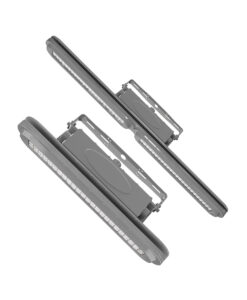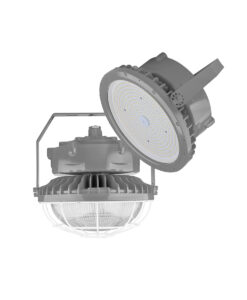A hazardous location is defined as the presence of a specific concentration of fuel in an environment where electric service is also available. They include: Flammable Gases and Liquids, which have an ignitable range of concentration, and Dust/Fibers and Flyings, which are combustible. Auto Ignition Temperature (AIT) is used to determine the required maximum operating temperature of heat-generating devices, including luminaires. These explosion proof LED lights must be designed to contain all sparks or flames generated during normal or abnormal conditions, and must not exceed the maximum operating temperature required for this environment. The National Electric Code (NEC) classifies potentially hazardous materials and conditions. Basic requirements for Class I Division 2 electrical equipment are no arcing or sparking parts be present, or if present, be in an explosion-proof enclosure. PacLights’s explosion proof lighting products are approved for use in Class 1, Division 2, Groups A, B, C, and D.
need help?
Ask Lighting Experts for Recommendations, Plan your Project with a Free Lighting Layout, or Request a Quote.
Ask an Expert Lighting Layout Get a QuoteLEARN MORE ABOUT HAZARDOUS LIGHTING FIXTURES
Class I: A hazardous location in which flammable gases or vapors may be present in the air in sufficient quantities to be explosive or ignitable, such as petroleum refineries, aircraft hangars, dry cleaning plants, utility gas plants or storage areas for liquified petroleum or natural gas, and spray finishing areas.
Division 2: Abnormal condition, where ignitable concentrations of flammable gases, vapors or liquids are not likely to exist under normal operating conditions, for example: Closed storage drums containing flammable liquids in an inside storage room would not normally allow the hazardous vapors to escape into the atmosphere. But if one of the containers is leaking, you’ve got an abnormal condition.
Groups A - D: The gases and vapors of Class I locations are broken into four groups by the Code: A, B, C, and D. These materials are grouped according to the ignition temperature of the substance, its explosion pressure, and other flammable characteristics.
- Group A - The only substance in Group A is acetylene because it is a gas with extremely high explosion pressures.
- Group B - This group includes hydrogen and other materials with similar characteristics.
- Group C & D - The most usual Class I groups. They comprise the greatest percentage of all Class I hazardous locations. Found in Group C is ethylene. Found in Group D are many of the most common flammable substances such as butane, gasoline, natural gas and propane.



